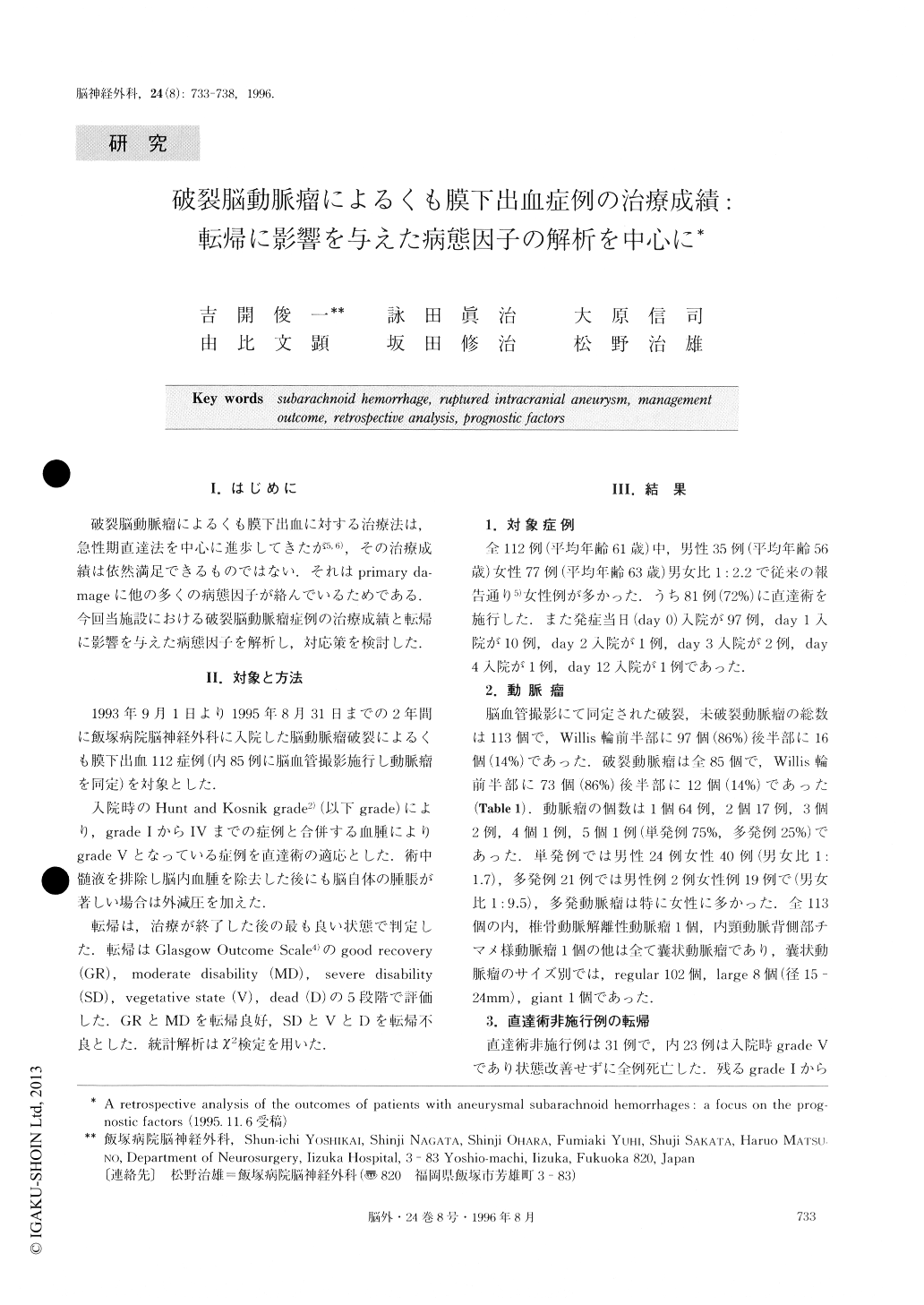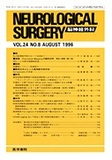Japanese
English
- 有料閲覧
- Abstract 文献概要
- 1ページ目 Look Inside
I.はじめに
破裂脳動脈瘤によるくも膜下出血に対する治療法は,急性期直達法を中心に進歩してきたが5,6),その治療成績は依然満足できるものではない.それはprimary da—mageに他の多くの病態因子が絡んでいるためである.今回当施設における破裂脳動脈瘤症例の治療成績と転帰に影響を与えた病態因子を解析し,対応策を検討した.
The authors report a clinical analysis of the outcom-es of aneurysmal subarachnoid hemorrhages in 112 pa-tients. Cerebral angiography was conducted on 85 pa-tients. Clipping or wrapping of the aneurysm was per-formed on 81 patients. The overall good outcome (GR and MD in the Glasgow Outcome Scale) ratio and mor-tality rate were 43% and 34%, respectively. The good outcome ratio and mortality rate in operative cases were 59% and 12%, respectively. With regard to the timing of the operation, 77 cases (95%) underwent early operation and 4 cases (5%) underwent delayed opera-tion. The good outcome ratio of patients with grade Ⅰ to Ⅲ at surgery using the Hunt and Kosnik grading system was 74%. There was no difference in outcome between the patients with a ruptured aneurysm in the anterior circulation and those with one in the posterior circulation. The retrospective analysis of the overall outcomes showed the risk factors as being: age over 70 years, cerebral atherosclerosis, poor grade on Hunt and Kosnik grading system and symptomatic vaso-spasm. Preoperative bleeding of the aneurysm, severe brain swelling at surgery, and postoperative symptoma-tic vasospasm were factors which worsen the outcome of surgically treated patients. Patients with more than 2 factors showed worse outcomes than those with only one factor. The utilization of these prognostic factors should be important to improve the outcome of patients with aneurysmal subarachnoid hemorrhage.

Copyright © 1996, Igaku-Shoin Ltd. All rights reserved.


